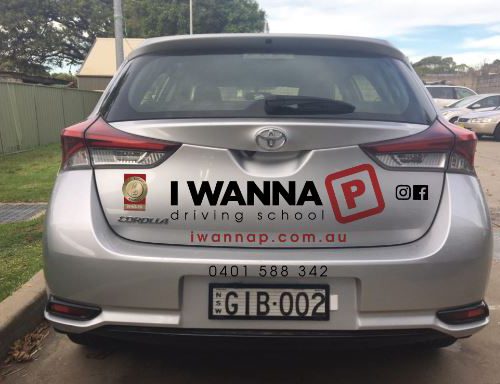It’s the day of the driving test, and, if you are like 99% of the population, you are feeling a combination of nervous, anxious, excited, apprehensive, hopeful…. even scared!!
Don’t worry, it’s all completely normal. Humans are programmed to hope for the best but fear the worst.
Here’s the thing. You want your P’s, and the only way to get them is to successfully pass the driving test. That’s it.
But how will it all go down on the day? Below is your guide to the driving test, from what to take to what you will be assessed on.
WHAT TO BRING CHECKLIST
- COMPLETED LOGBOOK (minimum 120 hours consisting of at least 20 night hours)
- DRIVERS LICENCE
- DRIVERS LICENCE APPLICATION FORM – green in colour and you will have had to fill this out when doing your Hazard Perception Test
- TEST BOOKING CONFIRMATION SLIP
- A ROAD WORTHY VEHICLE (sounds obvious I know but I have seen people turn up thinking RMS provide the car – they don’t!)
- MONEY TO PAY FOR YOUR NEW LICENCE IF YOU PASS (currently $58)
HOW THE TEST WILL START
A driving assessor will call out your name and check your logbook, licence and application form. They will introduce themselves and ask you to sign the test score sheet they will be using to assess you. You will then head out to the testing car park (make sure your car is parked in one of the designated testing spaces) to check that the indicators and brake lights are all working. If they aren’t you won’t be able to use that car for your test. The assessor will then get into the passenger seat, seat belts go on, and they will briefly explain what is about to happen, including which man-oeuvres you will be asked to do, then its time to turn the car on and begin your drive.
DURING THE TEST
The test will last approx. 30 minutes, and the assessor will clearly direct you around the driving test route. They may tell you which lane to enter if there is more than one to choose from, but if they don’t you decide. You are being assessed on four main things:
- SPEED
- DECISION MAKING
- POSITIONING
- CONTROLS
Each of these four areas will be marked 25 times, giving you a base test score of 100.
In addition, they will note down any hazards you encounter (pedestrians, cars turning, debris on road, etc) and award extra marks if you respond to the hazard appropriately (giving way, slowing down, adjusting road position, etc).
You must gain at least 90% to pass the driving test, so even though you don’t want to, you can lose a few marks and still pass comfortably.
BUT BEWARE!! There are also 19 fail Items on the score sheet and getting a cross in any one of these will mean you will not pass the driving test, regardless of your overall score. I will talk about these fail items in detail in another blog.
At the end of your drive, you will re-enter the testing car park and park the car in an available space. Then its inside the test centre where you will be asked to go and have a seat while the assessor tallies up your total score. They will then call you up to the counter to inform you of your result. Hopefully a pass.
AFTER THE TEST
If you were unsuccessful the assessor will explain the reason why and ask you if you wish to re-book the test for the following week (you must wait at least 7 days).
If you passed you will have your photo taken (can’t smile sorry), pay $58 dollars for your licence and be issued with a paper interim licence, which you use until your proper one arrives in the mail in 7 to 10 days.


